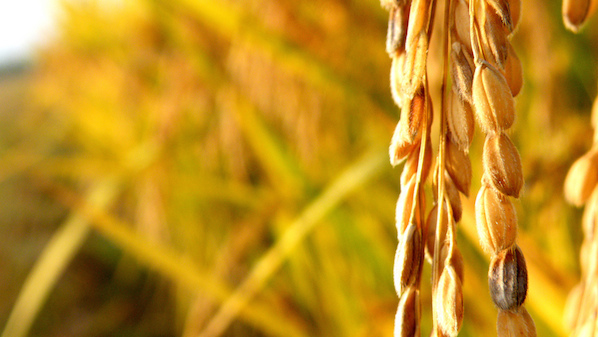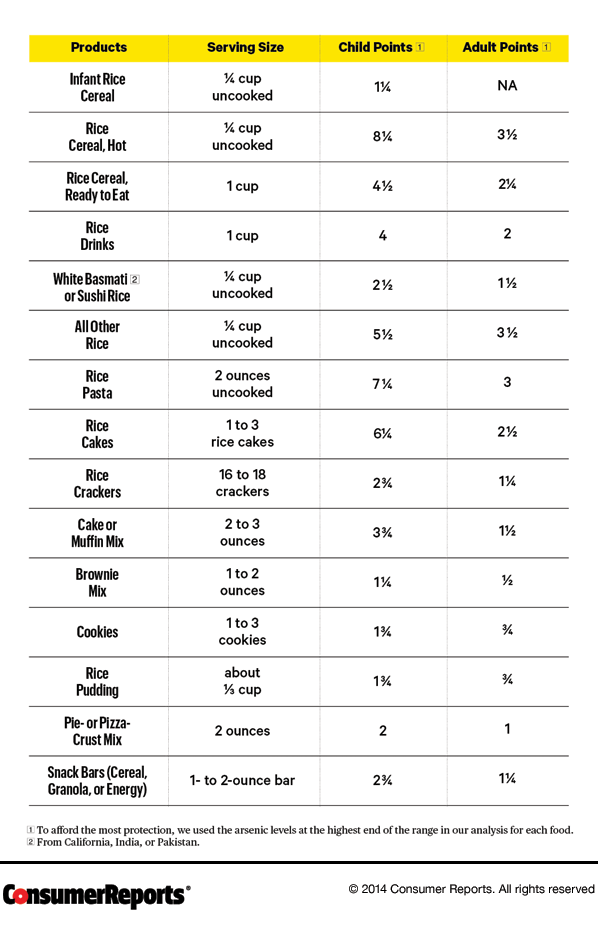Brown rice happens to be my grain of choice. I love it so much that I recently bought a 25 pound bag of organic sweet short grained brown rice from Lundberg Farms. Brown rice syrup, crackers, rice milk… we’re swimming in the nutritious grain that has nourished millions across the world. But there is a problem with some brown rice being contaminated with arsenic, a naturally occurring element that has been linked to various types of cancer.
Consumer Reports did a thorough investigation of the issue of arsenic in brown rice and came out with new dietary guidelines for children and adults. The information in their new report answers all of the questions many of us had like, which kinds of rice are safer? And, do we need to adjust our diets?
I will preface this with one thing: we live in a complicated world full of risk. There are risks associated with eating foods with food dyes, heavy metals in cosmetics and driving your car down a busy highway. Deciding which risks we choose to avoid is up to each of us as individuals. I will continue to eat brown rice, but will simply adjust my portion size.
Consumer Reports: Brown Rice and Arsenic
Why is arsenic in rice and is it harmful?
There are two types of arsenic found in rice, organic and inorganic. Like many minerals and heavy metals, arsenic is naturally occurring in the earth and is absorbed into the rice during the growing process. There are many different exposures to arsenic in any given day including: apples, fruit juices, certain poultry feed and some pesticides.
Inorganic arsenic is more toxic than organic arsenic (not to be confused with the USDA Organic certification). Consumer Reports analyzed data from the Food and Drug Administration (FDA), which studied the inorganic arsenic levels in 656 processed rice-containing products. The FDA currently has set no arsenic limits allowed in food, highlighting a major gap in our federal food safety laws.
According to Consumer Reports:
Regular exposure to small amounts of [inorganic] arsenic can increase the risk of bladder, lung, and skin cancer, as well as heart disease and type 2 diabetes. Recent studies also suggest that arsenic exposure in utero may have effects on the baby’s immune system.”
Before you freak out and throw away all your rice milk, grains and power bars, read on…
What Consumer Reports found:
- Rice cereal and rice pasta had higher levels of inorganic arsenic.
- California grown rice has one third less inorganic arsenic than other brown rice.
- White basmati and sushi rice has less arsenic than other types of rice.
- Rice from Arkansas, Louisiana and Texas had higher levels of arsenic.
- Brown rice has significantly more arsenic (up to 80% more) than other rice types.
- USDA organic grown rice still absorbs arsenic.
What you can do:
- Review the dietary guidelines listed below from Consumer Reports.
- Fully wash all rice before cooking, using a 1:6 rice to water ratio.
- Choose white basmati (India, Pakistan and USA) and sushi rice (from the USA) when possible.
- Vary grain consumption mixing in amaranth, millet, quinoa and unroasted buckwheat.
- Sign this petition asking the FDA to set limits for arsenic in food!
Dietary recommendations from Consumer Reports:
- One serving of a rice cake is the maximum weekly allowable limit for children.
- Avoid feeding your children rice cereal (a popular “first solid food”).
- Avoid giving children under the age of five rice milk.
I love brown rice and use it as a staple for many of my simple meals. I love rice milk in my smoothies and have talked about the water conservation benefits for choosing rice milk over almond milk.
I wanted to share this information with you all as an educator and public health advocate. But I’m also going to be honest with you; I probably won’t stop eating brown rice. I won’t stop drinking rice milk, but I will start to vary my grain consumption to include wild rice, unroasted buckwheat and millet.
In the meantime here are some guidelines to help decipher which sources of brown rice you can incorporate into your diet.
Consumer Reports Dietary Guidelines for Brown Rice Consumption:
7 points allowed each week

Never miss a post and join my email list.
(Photo credit: boyosep – Flickr CC)




I really appreciate your research on this information, Lindsay. It’s been on my mind since reading the report. We won’t give up brown rice either but will make a more focused effort to switch up the grains we’re choosing. It’ll keep out meals more interesting too!
Thanks so much for linking to me petition. I have switched rices. One product that I do stay away is brown rice syrup. It is too concentrated with in organic arsenic.
Really interesting, Lindsay. I didn’t know this before (and am a huge brown rice fan!). I recently tried Amarynth and am pretty hooked…1/4 the price of quinoa (at least here in Boston) and with a lot of protein (and delicious!)
I have switched to white basmati and eat it very rarely. I often use orzo in recipes that call for rice.
Recently my dogs (four of them) and I got very sick. I got very, very, very sick with lightheadedness, extreme fatigue, stomach issues, etc. My dogs got diarrhea, vomiting, lethargy. Figuring we ate something wrong (yes, I share goodies I get) we all ate a bunch of brown rice cereal (Rice and Shine) one morning and got even more sick with the same symptoms. This is when the light went on. I looked up arsenic toxicity symptoms and those are the symptoms. Beware that Rice and Shine is from Texas where arsenic is highest. I think I’ve been suffering from chronic arsenic toxicity for some time now. I used rice milk very often and ate about four rice cakes daily plus reg. brown rice or rice cereal daily. It’ll be a hard habit to break but I’m doing it. I read, fyi, that the homeopathic remedy arsenicum album helps detox this so we are all going to try that.